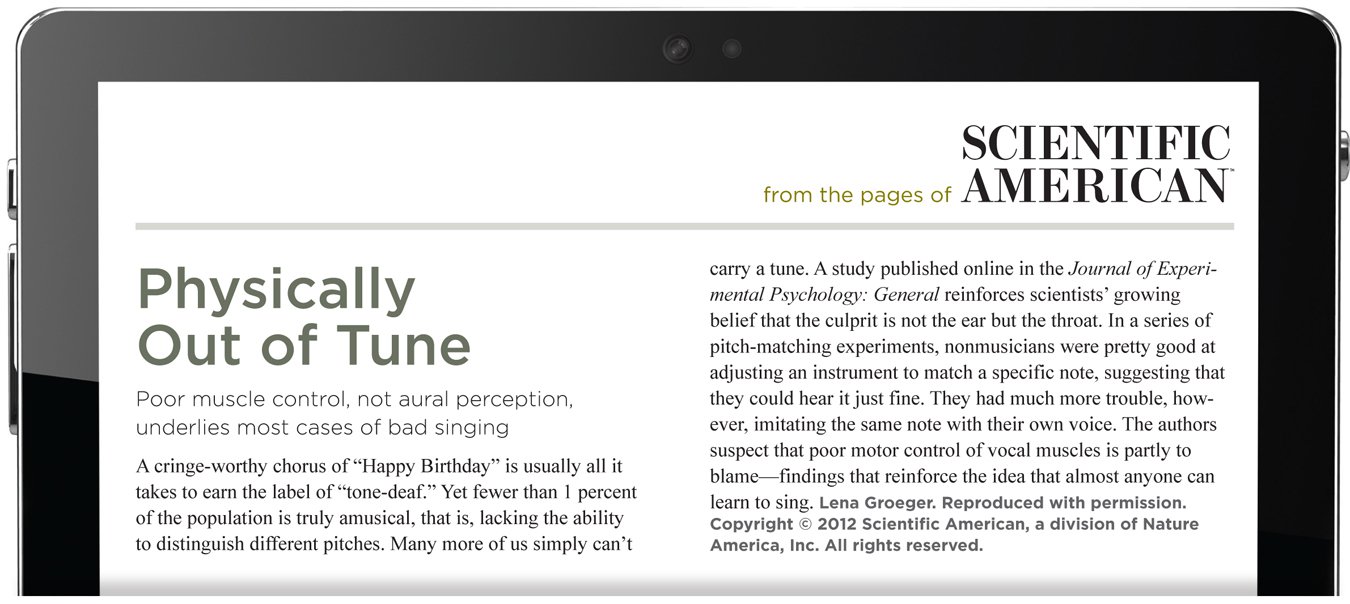Chapter 1. Chapter
Article
From the Pages of Scientific American
Physically Out of Tune

Click the image to enlarge. Click "Next" to continue.
1.1 Quiz
1. Roughly, what percentage of the population can truly be said to not be able to distinguish different pitches?
| A. |
| B. |
| C. |
| D. |
2. The study discussed in the Scientific American excerpt Physically Out of Tune suggests that people’s problems with carrying a tune come from the:
| A. |
| B. |
| C. |
| D. |
3. In the study from the Journal of Experimental Psychology: General that was described, what was the result of the non-musician participants’ attempts to adjust an instrument to match a specific note?
| A. |
| B. |
| C. |
| D. |
4. Pitch is equivalent to what property of sound?
| A. |
| B. |
| C. |
| D. |
5. If Jackie said that she could never learn to sing because she “doesn’t have an ear for music,” what might the research that was presented say is an appropriate response?
| A. |
| B. |
| C. |
| D. |